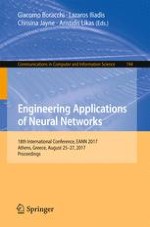2017 | OriginalPaper | Chapter
Recommender Systems Meeting Security: From Product Recommendation to Cyber-Attack Prediction
Authors : Nikolaos Polatidis, Elias Pimenidis, Michalis Pavlidis, Haralambos Mouratidis
Published in: Engineering Applications of Neural Networks
Publisher: Springer International Publishing
Activate our intelligent search to find suitable subject content or patents.
Select sections of text to find matching patents with Artificial Intelligence. powered by
Select sections of text to find additional relevant content using AI-assisted search. powered by
